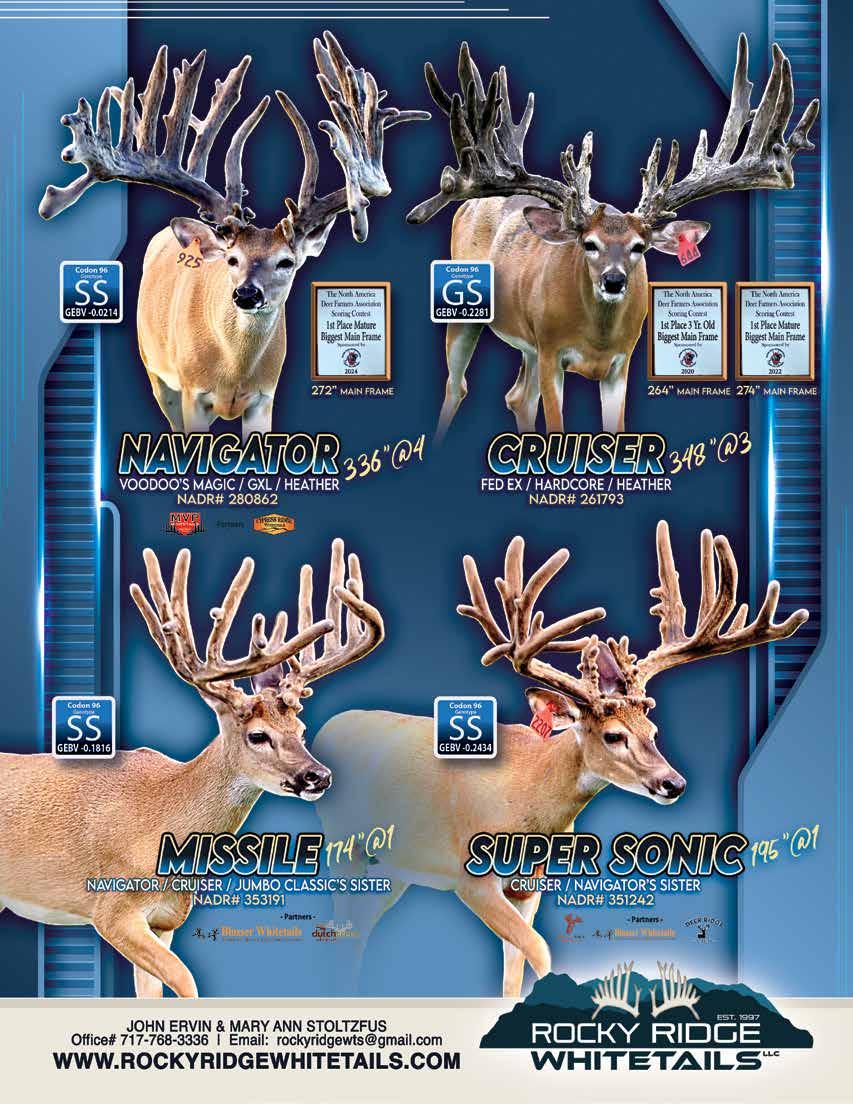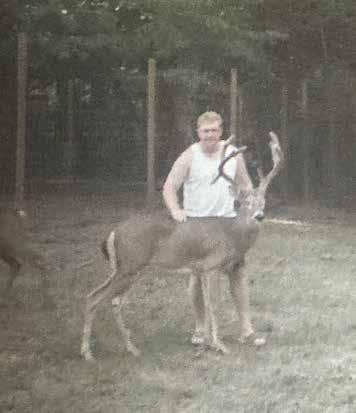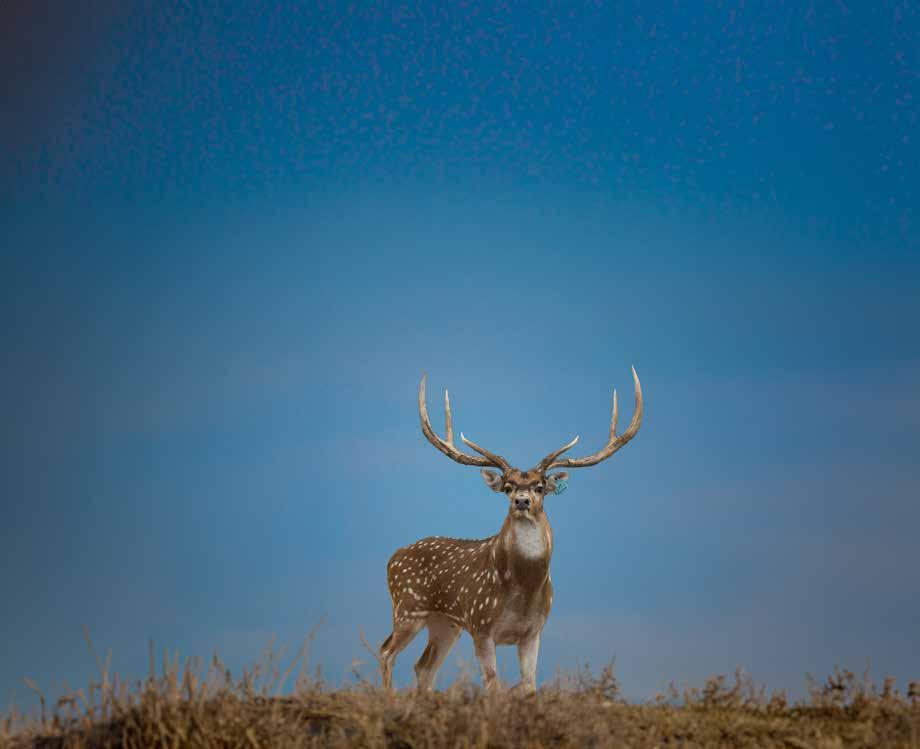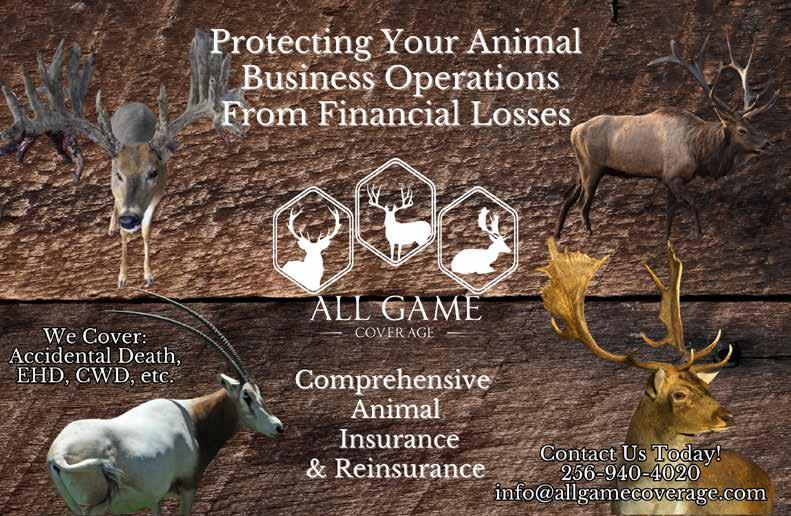
























Jason Becker
PRESIDENT
Campbellsville, KY jasonbecker757@gmail.com 757-692-5820


Jake Anderson
VICE PRESIDENT 925 Guston Rd Guston KY 40142
janderson@theluskgroup.com 270-547-8432



Ethan Woosley
9064 Shrewsbury Road Leitchfield, KY 42754 Singlecreekwhitetails@gmail.com 270-316-9698
Daniel Stallard
Copper Creek Whitetails 500 Copper Creek Rd Dawson Springs, KY 42408 214-897-1958
Patrick Stanley
Twisted Tines Ranch / Crooked Creek Whitetails P.O. Box 130 Williamstown, KY 41097
Tony Maddox
CHAIRMAN
725 Rabbit Town Rd
Winchester KY 40391
solidrockwhitetails@yahoo.com 859-556-7253 • 239-340-1171
SECRETARY
Princeton KY 42445
prestonthomasfarms@gmail.com 270-889-1001

WES BREWER
TREASURER
Hodgenville KY 42748
mwb5304@yahoo.com 502-297-1309


Henry Woodard 9776 Roseville Rd Glasgow KY 42141
woodardpropertiestn@gmail.com 423-595-8898
Josh Moore
J&L Whitetails Maysville, KY 606-748-7563
Joe Miller
4195 Penchem Rd Guthrie KY 42234
jmgreenlandsod@safecom.link 270-483-2140
David Miller
1873 Forestville Rd Mumfordville KY 42765 270-537-5357

Hello all, on behalf of K.A.L.A hopefully everyone has had another successful fawning season! It has been an interesting season for many farms, both good and bad. Its definitely safe to say that summer is here and things are definitely heating up! Bucks are swiftly growing, starting to show their potential and the Association is diligently working to prepare for our annual fundraising event! We have an impressive & talented leadership team this year, & several phenomenal individuals whom have been a huge asset to us, as they have devoted their time to take on the responsibility of a variety of tasks ensuring that we continue to be successful! On behalf of K.A.L.A, we are infinitely grateful for all of you and for what you continue to bring to the table!
We are looking forward to seeing everyone at our 4th Annual Summer Showcase & Fundraiser Auction! If you haven’t seen the flyer yet, it is in this magazine!! We are welcoming Deer & Wildlife Stories with Keith Warren again this year, so that is super exciting! Saturday August 10th, will be a great day filled with food, fun, & fellowship! We strive to keep our events family oriented, & the kids always have a great time! We will have some exciting new things happening this year in the kid’s events! We guarantee your kids will have more fun this year than ever before! Thank you, Latrisha Moore, for being the driving force behind such a successful kid’s event! We can’t wait to see y’all there!
If you are interested in placing an ad in our free Classified section, we are nearing fall soon and there is no better time to have your ads printed. It Is totally free to K.A.L.A members, and definitely would be worth your time to take advantage of the free advertising opportunity! We are also looking for new candidates for our Farm Feature section! If you haven’t yet been featured, please reach out to us! It is totally free, and is a great way to be introduced to the industry, or have your farm in the spotlight! We are soon to be revisiting farms that were once featured in the past, to see how things have changed over the years! If you have any suggestions for us to continue to make our magazine more interesting, please reach out to us! We have a phenomenal magazine, as good as any across the industry, but we are always looking for new ways to keep things interesting! Thank you all for your support!
Ethan Woosley K.A.L.A Magazine Chairman
Magazine Committee
Grayson Steele
Maryann Hall
Kathy Brooks






By: Grayson Steele
ight off exit 95 in Richmond, KY is White Hall Whitetails. A farm that’s newer in the industry, but they sure are growing. At the beginning of 2023 another deer farmer went into Sarah’s brother’s taxidermy shop and was telling her brother and father all about it. Intrigued by this, her father, David, asked her when she arrived at the shop that afternoon, “why do you not have a deer farm?” and Sarah’s response was “what’s a deer farm?” After a few phone calls and visiting a few farms, they couldn’t wait to
get started. She says, “Who wouldn’t want to make a living raising deer?”
As with any new adventure, there is plenty of room for growth and opportunity amongst the various challenges that arise. It has been no different for White Hall Whitetails. Sarah said getting a name established when you’re just starting out can be challenging, but talking to other farmers has been a major key in shedding light on things the farm can improve upon. On the flip side, when asked about their biggest accomplishment,
David said, “five miles of fencing! LOL Probably not quite that much, but it sure felt like it!”
With learning being part of the process, White Hall says they are constantly finding better and easier ways to do things and encourages other deer farmers to do the same. Visit other farms, talk to other deer farmers, and ask questions. They also advise farmers to keep good records and notes, as it is easy to forget, especially when one is just starting out. It’s the best way to grow in the industry.




White Hall Whitetails hopes to establish trustworthy relationships and maintain a healthy herd including quality bucks. They have been TB and Brucellosis certified and are excited to see what the next few years bring with their pedigreed does. If you are ever in their area, they invite you to “come visit and talk deer.”
Thank you White Hall for being a part of the KY deer industry! We look forward to seeing your farm grow and reach your goals!








THURSDAY & FRIDAY, AUGUST 15 & 16
THURSDAY AUGUST 15
7:00AM Booth Setup
9:00AM Booth Visitation
12:00 Free Lunch
1:00PM Auction Starts with Elite 25 (Selling approximately 150 Lots)
4:30PM WDFO Annual Membership Meeting Followed by Speakers
5:00-6:30PM ......................................Dinner Served (ticket required)
7:00PM Donkey Ball Game
10:00PM Exhibit Hall Closes
FRIDAY AUGUST 16
7:00AM Doors Open
9:00AM Auction Starts
11:30-12:30 Free Lunch
4:30-6:30PM Dinner Served (ticket required)
6:30PM WDFO Benefit Auction (Followed by Raffle Drawings)
App. 9:30PM Event Ends
Schedule is subject to change. Stay tuned for updates.
TABLES {8 PEOPLE}
$1000 Table purchase includes all meals for event. Each table wins a gun & gets 8 UTV tickets. 8 cards of basket raffle tickets + other free gifts.
INDIVIDUAL SEATS
can be purchased for gun tables for $150 per seat. There will also be plenty of free seats available if you do not wish to purchase a table.
BOOTHS {10X10}
$250
Booth space will be very limited.
LOTS OF RAFFLE PRIZES
WOMEN’S RAFFLE
Sewing Machine
$500 Cash Mixer
HUGE BASKET RAFFLE
JOHNNY BLIND RAFFLE
MAIN RAFFLE
Kawasaki Mule
Stihl HT 135 Pole Saw
Blackstone Griddle
St. Croix Rod & Reel
Solo Stove ‘Bonfire ’
GUN BLITZ
Draw subject to availability.






Bring the whole family. There are lots of activities for all.










Every summer in the late 80’s, as a young teenaged boy, Eddie Ray Borkholder would put out a sign at the front of his Nappanee, Indiana home. It read “Fawns for Sale. $100.” He never had to wait long for interested customers. Turns out, no one can resist a fawn. In 1999, Jim Davidson was on his tractor one early June morning in Marshall, Illinois, when he saw an adult doe get hit and killed by a car. He quickly discovered she had a doe fawn. He made two or three rounds near the road to check on it, worried it would suffer the same fate as it’s mother.
Pretty soon, the little bleating fawn started following him. Concerned for her welfare, Jim, now 80, climbed down from his tractor, scooped up the precocious new life in his arms, and put her in the tractor with him. He rode all day with the tiny fawn either in his lap or right next to him. When daylight began to fade, he wasn’t sure what to do, although he was certain he couldn’t let her go out on her own. That night, as a gift he gave her to his very young grandchildren Derrick and Taylor, who shrieked with love for their new
By: Gail Veley • Sponsored by The Indiana Deer and Elk Farmers Association
pet and named her Bambi. When their father Rick Davidson (who would later own Illinois Dominant Bucks) got home, he was initially not pleased with what his father had done. At all. However, it turned out to be the best thing that ever happened to their family. And what began as just a love for deer, later turned into a full-blown business after buying 200 acres in 2005 from his Aunt Francie.
Like Davidson, Borkholder’s simple love of deer took a more serious turn in the 1990’s when he started his unique Patrick line and Pine Creek Deer Farm. However, a love for agriculture and all that came with it started much earlier for Borkholder and Davidson by the generations of family members before them, who knew what it was like to be up every morning before sunrise, work long hard hours in the sting of the cold or burning of the sun (along with

working up a hearty appetite) and later drop in bed grateful, tired and ready to start all over again the next day. Eddie Ray, the first is his family to farm deer, grew up learning the art of crop and dairy farming from his father, grandfather and great grandfather. His son Josie, in learning the art of raising deer, felt in his younger years that farming itself was, honestly, just a lot of hard, hard work. “Looking back, I see it now as more of a luxury and bonding time with Dad,” reflected Josie, who now owns Lone Pine Deer Farm with James Slaubaugh. “Today, farming is getting lost. We need to look at creative ways to continue, and deer farming is one way to do that. Dairy farming has become so





commercial and there aren’t many new dairy farms starting up. If we don’t take the opportunity now to carry farming forward it will be lost.”
Davidson, the first is his family to raise deer, is a 5th generation farmer, who comes from a long line of long-lived farmers who raised dairy cows and grew corn, soybeans and alfalfa. When most
children were learning to ride bikes, Davidson was learning to drive a tractor. As age six he sat behind the wheel for the first time, his great great grandfather Richard “Dick” Davidson patiently walking beside him, teaching him the skill needed to drive the now long outdated Ford 8N stick shift two-wheel drive metal seated tractor. “It took a while for me to catch on,” Davidson said. However, he learned along with that experience what drove his grandfather to farm his land. “Farming gets in your blood,” he said. “At first, I wasn’t sure I wanted to farm and work as hard as my Dad. It was only after going away to college and being away from it, that I realized how much I missed it. It’s critical to keep family farms going. Farming is the backbone of our country. We are always going
to need to eat. Without farming, we lose valuable land and the love of the outdoors. Deer farming is an extension of that love and something we need to continue to pass down.”






Pennsylvania
Southeast
Tri-State
United

MEMERSHIP DUES:
Regular Voting Membership $100 Out of State Associate Membeship $50 (non-voting)
I hereby make application for membership the Kentucky Alternative Livestock Assocation.
I agree to confirm to the bylaws and code of ethics governing the association.
Signature
Date: ______________________
Member Name: Farm Name:
New Member: ________ Renewal: ________
Address: Phone: Email: Online application avaliable on our Website: kalaky.net

737 Finely Ridge Road Campbellsville, KY JasonBecker757@gmail.com 757-692-5820

CradlesFor pricing and ordering contact Ace Whitetails at acewhitetailsky@ gmail.com or text (502) 994-8656
Phone (260) 248-1684

#1300/392156









Advertisers running ads in any of the 2024 Multi State Association Magazines will have the opportunity to place a single buck update photo in the D&K Design September Showcase Book.
Reservation for space and buck info will be due no later than August 14th, 2024. If you have an existing picture ready to go, that will also be due at that time. If you would like to send in a last minute photo of your buck, the cutoff date is Monday, September 2nd by 9am CST. Placement will be in order of first come first serve. Printing and mailing will start September 4th and be in hand between September 16th-20th. Just in time for semen sales getting ready for Breeding Season. These will be mailed to members of the 19 state associations we service. (More information will be mailed out to all current advertisers closer to the date)
Cost: $175.00 each 1/4 page ad or 4 for $650.00 (Pre-register and we will contact you for further information)




This year, the NADeFA fly-in to Washington, D.C. happened between April 8-10th. Members from North Dakota, South Dakota, Missouri, Oklahoma, Pennsylvania, Alabama, Michigan, and New York joined together to represent NADeFA in our nation’s capital. The group had the opportunity to talk to lawmakers about the key issues that affect them, specifically the adverse effects of chronic wasting disease (CWD), the need for a cure, and the importance of indemnity money for deer farmers and ranchers nation-wide.
The Congressional meetings were focused on two sets of asks for FY 2025. The first one, is for the Chronic Wasting Disease Research and Management Act to be funded at $15 million. For context, the bill was passed in the last Congress by efforts from Capitol Hill Consulting Group, in collaboration with the NADeFA fly-in, and was authorized $70 million a year for research and development efforts aimed at finding a cure. Of that amount, half will go to State Agriculture and Wildlife agencies to manage CWD activity within their states, while the other half will be used to improve the science surrounding the disease. However, NADeFA is asking for a fifth of the authorized dollars due to the limited funds in FY2025, and are seeking to use it as seed money to get the program started. The second request was for Congress to appropriate $18.5 million for the Animal and Plant Health Inspection (APHIS) to fund the Cervid Health Program, a $1 million increase over FY24, and ensure that indemnity money is set aside for those farms affected by CWD.
One of the main priorities for the visit this year was to characterize CWD as a national issue and emphasize that with increasing Congressional support focused on live testing and genetic resistance research efforts, an answer for this disease is on the horizon. Key meetings included Chairman of the House Agriculture Committee Congressman GT Thompson (R-PA), Congressman Brian Babin (R-TX), and Senator John Hoeven (R-ND). Additionally, NADeFA members were able to meet with APHIS Administrator Dr. Michael Watson in USDA and Taylor Schmitz from the Congressional Sportsman Foundation.
In their free time, the group had the opportunity to visit Arlington Cemetery and closed the successful trip with the yearly tradition of dinner at Fogo de Chao, an internationally-renowned Brazilian steakhouse. The impact of those who took time out of their schedules to come to D.C. is incredibly valued and noted. Fly-ins are an essential component in Congressional communication, especially when discussing issues affecting you and your community. The meetings have a proven record of securing policy changes as seen with the Chronic Wasting Disease Research and Management Act. It was a pleasure having NADeFA visit us here in D.C. last month and we are excited for next year’s trip!
By Caroline Herrera Capitol Hill Consulting







Disclaimer: The information contained in this advertisement is general in nature and is intended for use as an informational aid. It does not cover all possible uses, actions, precautions, side effects, or interactions of the medications shown, nor is the information intended as medical advice or for making an evaluation as to the risks and benefits of using a particular medication. You should consult with your veterinarian about diagnosis and treatment of any health problems. Information and statements have not been evaluated by the Food and Drug Administration (FDA), nor has the FDA approved the medications to diagnose, cure or prevent disease. Medications compounded by Mixlab are prepared at the direction of a veterinarian. Mixlab compounded veterinary preparations are not intended for use in food and food-producing animals. Mixlab does not recommend, endorse or make any representation about the efficacy, appropriateness or suitability of any specific dosing, products, procedures, treatments, services, opinions, veterinary care providers, or other information that may be contained in this advertisement. Mixlab is not responsible nor liable for any advice, course of treatment, diagnosis or any other information, services or products that you obtain through this advertisement.






Micr ochips
• USDA 15 digit ISO
• 9 digit Avid and 10 digit Euro.
Avid Reader s
• Avid MiniTracker Livestock Reader specially priced.
• Blue Tooth® option.
• Dependable Fast, Accurate read EVERY Time!
• U.S.A. made and service.






By: Gail Veley • Sponsored by The Alabama Deer Farmers Association
Without a doubt, “insect infestation affects the growth of deer antlers,” offers Dr. Dan Moore, DVM and owner of The Natural Vet, a supplement supply company based out of Unicoi, Tennessee. As a recent attendee of the 2024 Alabama Deer Farmers Association annual convention, Dr. Moore is well-versed in the types of insects that plague deer farmers in southern states such as Alabama and Tennessee. Insects such as mosquitoes, ticks and midge flies “also carry the threat of disease in deer, leading to stress, weight loss, deficient antler growth, anemia and even death in more severe cases,” added Dr. Moore, 68, a retired veterinarian and former owner of two vet practices.
For deer farmers, protecting their deer from disease is akin to protecting their very own families, Dr. Moore has learned. “This is how much deer farmers love their deer. I even knew a farmer once who had two fawns at his wedding just for the sake of having them there,” he said. For the sake of running a successful operation, prevention is the main focus in disease management. While Alabama itself is home to several predatory animals that can harm adult deer and fawns
such as opossums, hawks, coyotes, alligators, raccoons and feral hogs, to name a few, insects cannot be held back by sturdier fences, traps or legal, seasonal hunting practices.
In the warmer, moist and more humid climate found in Alabama “insects must be managed yearround,” Dr. Moore said. These insects predominately include midge flies which can carry Epizootic Hemorrhagic Disease (EHD), horse flies which live on host blood and deliver painful and stressful bites, ticks which can carry Lyme Disease and mosquitoes which can carry a vast amount of diseases such as Eastern Equine Encephalitis, West Nile virus and other diseases that can also affect both deer and humans. Alabama is home to approximately 60 species of mosquitoes that are attracted to water puddles, watering holes, ditches and other waterways.
Eradication methods include fogging with misting systems, insect deterrent sprays such as fly spray and supplements added to feed to make livestock unpalatable to preying insects who depend on their host blood for survival. Understanding which insects are most prevalent at your deer farm can help guide decisions such as which time of day is most effective for fogging, or when to mow or not now grass, or simply leave

it as grazing land. However, without careful scrutiny and monitoring, these practices could cause misfortune to other wildlife species, floral and fauna that are not harmful to deer.

Many deer supplement products, available from a wide variety of local and on-line feed stores, were primarily derived from Dr. Moore’s horse products after it was discovered that deer found them appealing. “They can provide deer farmers with natural solutions to common problems,” Dr. Moore said. “My father went through threeyear illness during which I lost faith in traditional medicine. I felt that there could be better and more natural ways to propagate health for ourselves and our domestic animals.”
“I highly recommend that all deer farmers investigate natural solutions for the dilemmas they face in raising their deer,” Dr. Moore. “This can also include more natural dewormers, insect sprays and feed management practices. Considering the big picture, I think this is the best thing to do.”






If you are a Kentucky Hunting Preserve and would like to share one of your game recipes to KALA’s Kitchen and be featured in one of our upcoming KALA Magazine issues please contact Maryann Hall at solidrockwhitetails@ yahoo.com or call 859-556-7262. All you have to do is be a KALA member to participate!

By Solid Rock Whitetails
• 2-3 lbs elk or venison cut into small chunks
• 1tbsp butter
• 3 tbsp olive oil
• 2 (32 oz) boxes of beef broth plus 6-8 bouillon cubes
• 1 (12oz) can of beer of your choice
• 3 cloves garlic
• ½ tsp paprika
• 1 tsp pepper
• ½ tsp kosher salt
• 1 ½ tsp sugar
• 1 tbsp Worcestershire
• ½ medium onion cut into small pieces
• ½ bag baby carrots cut into smaller pieces
• 4-5 small potatoes cut into small cubes

1. Brown meat of your choice in butter and oil on medium-high heat and set aside.
2. Add onions to a pot and brown for 2-3 minutes, then add garlic and brown for an additional 1 minute.
3. Add browned venison/elk, beer, Worcestershire, beef broth, salt, pepper, sugar and paprika to the same pot and cover. Cook for approximately 1 ½ -2 hours. Be careful not to overcook if you do not want your meat to shred.
4. Add the potatoes and carrots at the last 30 minutes of the cook time. If you like a thicker stew, you will need to mix corn starch with 6-8 tbsp of cold water and add to the stew.


By: Gail Veley • Sponsored by PDFA

“Now whatever you do, don’t blow up Dad’s new decoy,” Glenn Dice affectionately told his young son Archer as they called in turkeys and waited during a spring 2021 hunt in their home state of Pennsylvania. When a big curious, striking gobbler checked out the decoy then stepped a few feet away, Archer, then 10, took his first shot ever as a hunter. Bingo. The victorious turkey hunt was followed by one in Florida this past spring and yet one more a month later back in Pennsylvania with another father and son. As the four eagerly waited in the cool predawn, competitive gobblers soon came running in, yet Archer appeared to hesitate. “Why aren’t you taking a shot?” Glenn whispered. “I don’t want to shoot your decoy,” Archer replied. Glenn quickly responded, “I don’t care about the decoy just shoot the darn turkey!” And with that, Archer’s aim was triumphant. He was the only one in the group to harvest anything that day.
The three bullet shells responsible for harvesting those three turkeys, each inscribed with Archer’s name, are kept on Glenn’s desk. He’s not only thrilled that his son shares one of his favorite pastimes, he’s also proud of his love of nature and the outdoors. Sharing that pride along with Glenn is Jeff Graham,
owner of Custom Pro Friction Calls and the man who taught Glenn to turkey hunt. After hearing about Archer’s first hunt, he surprised Glenn with a picture of Archer holding his first turkey, along with a personal inscription for Archer. In sharing a love of the outdoors with Archer and his other young son Lincoln, 9, Glenn, 53, feels “it’s paramount to appreciate nature and spend time with them outside. There’s not a better morning than being out in the woods. It’s my favorite time of day.”
Nationally, hunting is a multi-milliondollar industry responsible for substantial annual revenue. In 2021, revenue from hunting licenses was reported at $902,356,898, a $3 million increase from 2020. The top six states for issuing hunting licenses are typically Colorado at approximately $59 million followed by Texas at $47 million, Wisconsin at $41 million, Minnesota at $39 million, Pennsylvania at $37 million and Michigan also at $37 million. Even the tiny state of Rhode Island registered 26,690 hunters in 2021.
The most popular and number one animal to hunt is a whitetail deer followed by turkeys, elk and bear. While the interest in hunting is showing no signs of slowing down, without youth remaining interested in nature, hunting and the outdoors, subsequent decades may tell a different story. Vigilant deer farmers and preserve owners in Pennsylvania and in other states have a responsibility to ensure future generations embrace this same love, Glenn emphasized. “Being involved allows you to share your passion for the outdoors as well as collaborate on regulation development.
This enables us to enjoy year-round family-centered outdoor activities and to also be deer enthusiasts,” he said. “This involves working together as associations and staying abreast of current regulations and any proposed changes that affect us and standing up for our rights and practices of land ownership, management and stewardship.”
While Archer is poised to perpetuate this philosophy, he has yet to hunt whitetail, partially due to the fact that they are raised on the family farm, Glenn Dice Farms in Chambersburg. However, he has expressed an interest in trying. After they explore whitetail hunting sometime in the near future in Pennsylvania, Glenn and Archer may plan a Utah vacation to hunt mule deer. In the meantime, Glenn is working steadfast to maintain a constant presence in Washington on behalf of deer farmers, and to give back to an industry that has been so good to him and his family.



By: Gail Veley • Sponsored by IDEFA
Line breeding can present opportunities to produce desired, marketable and consistent traits within your whitetail herd, if you breed carefully and patiently. The bottom leg of a doe’s pedigree is the foundation for line breeding, explains Cletus Bontrager of Twin Maple Deer Farm, a 12-acre breeding farm in Shipshewana, Indiana which focuses on producing typical bucks. A doe with a strong bottom pedigree could ultimately produce a “supercharged” doe by following these most recommended steps. First, breed her to a desirable outcrossed sire. Next, select her most desirable 1st generation daughter and breed her to an outcrossed sire. Next, take this daughter’s most desirable 1st generation buck fawn and when he has matured, breed him back to his grandmother. Should this match create a doe, that doe will more than likely be the supercharged doe more “powerful” than her mother that you will use steadfast for breeding, in an effort pass on strong genetics and favorable, marketable traits.
Then, your thoughtfully bred supercharged doe can be outcrossed to a buck with your preferred traits, to perpetuate the type of whitetail herd you are desiring to raise, said Bontrager, 37, who’s been producing deer with his father Ezra since 2000.
When your supercharged doe has her own doe offspring, you would then breed those does back to your established select in-herd sires, rather than outcrossing, as this would take you farther away from the genetics and look you are after. Although this takes time and several breeding cycles, this process creates your line bred foundation stock. In most cases, only 10 to 15 percent of bucks produced from your supercharged doe will become breeder bucks and the rest, stocker bucks, said O’Lamar Borkholder of O’La Jo’s Whitetails, a seven-acre breeding farm in Bremen, Indiana. While the intent behind line breeding is to perpetuate desirable traits, inside every well-bred doe are hidden undesirable traits that only show up in her offspring, said Borkholder, who raises mainly typical deer. “The hardest thing is to keep that typical look – long, nice round beams,” he said. Therefore, if not done carefully, line breeding can expose undesirable traits and be a bigger downfall than an advantage.
Success with your line breeding efforts is realized when, after a few years, your herd begins to display and sustains a consistent look and striking resemblance, Bontrager explained. Twin Maple has heavily line bred the Patrick line into their herd, as a result of Ezra visiting Pine Creek Deer Farm and being impressed by long-tined typicals.


Today, 100% of Twin Maple’s 180 deer all anchor down to one doe. However, Borkholder, whose cousin Eddie Ray produced the famous line-bred Patrick deer, finds very few deer farmers today have the patience to wait and develop a herd of line bred foundation stock. Of the four types of breeding choices one can practice (inbreeding, line breeding, match breeding and random breeding) he finds most deer farmers choose random breeding whereby a farmer breeds a quality doe to the biggest or most popular buck on the scene at the moment. Many deer farmers also practice match breeding, a close cousin to line breeding, which involves perpetually choosing genetic lines that “click” or are known to produce well.
And while history may point to successful cases of inbreeding (breeding father to daughter or son to mom or full brother and sisters) chances of this can be slim. Fifteen years ago, a buck fawn bred his womb sister. A doe from that breeding was then outcrossed and subsequently produced one of the biggest 10-point mainframe breeding bucks of all time, Maxbo Arty.
However, in some cases, inbred deer are born blind, weak, get ugly racks or too runt-like to be worth feeding, Bontrager said. Line breeding (breeding uncles to nieces or nephews to aunts) absolutely requires having the right doe from the very bottom leg of her pedigree, Borkholder emphasized.







































IF YOU HAVEN’T TRIED PNEU-DART’S RDD S , YOU’RE MISSING MORE THAN YOUR TARGET
Did you know impact trauma can negatively influence medical treatment? We do. Which is why we’ve spent 55+ years perfecting the ideal remote delivery device. Shorter in length and lightest on the market, our disposable RDDs, with patented Slo-Inject® technology, provide ultimate accuracy while reducing the potential for problematic hematomas. Pneu-Dart. When you can’t afford to miss.®



















The rules for sudoku are simple:
A 9x9 square must be filled in with numbers from 1-9 with no repeated numbers in each line, horizontally or vertically.
To challenge you more, there are 3x3 squares marked out in the grid, and each of these squares can’t have any repeat numbers either.







44 ISSUES FOR 1 YR. (11 Publications x 4 quarters) - 18
$180 / Issue ($7920. / Yr) ~ Full Page
$102 / Issue ($4488. / Yr.) ~ Half Page (55-59%Discountoff singleadplacement)

16 ISSUES FOR 1 YR. (4 Publications of your choice x 4 quarters)
$204 / Issue ($3264. / Yr) ~ Full Page
$112 / Issue ($1792. / Yr.) ~ Half Page (48-54%Discountoff singleadplacement)




4 ISSUES FOR 1 YR. (1 Publication x 4 quarters)
$238 / Issue ($952. / Yr) ~ Full Page
$130 / Issue ($520. / Yr.) ~ Half Page (40-48%Discountoff singleadplacement)





Answers to puzzles will be available in the next issue, or can be found on our website: www.deersites.com
Coloring pages can be mailed to “Samantha Uchytil, 19291 59th St NE, New London, MN 56273” for a chance to be featured in the next issue!









